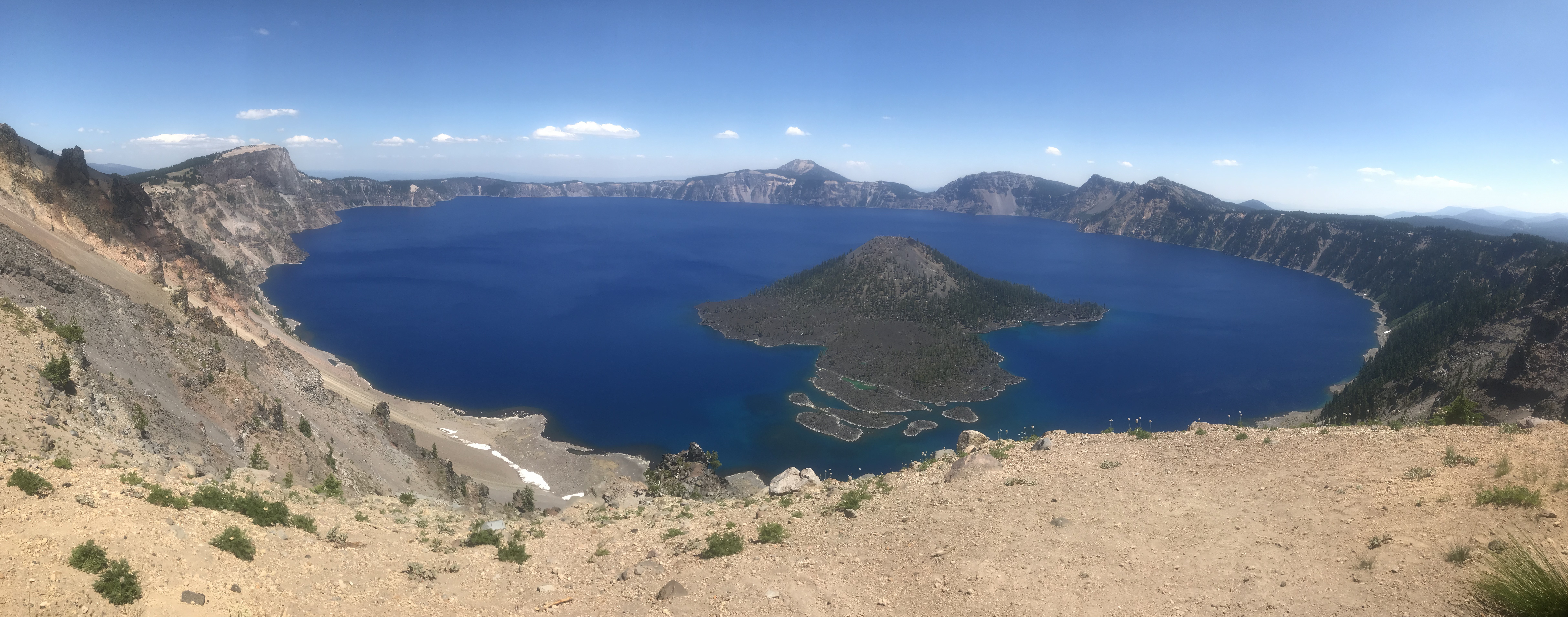Not far into the 20th century, on May 22, 1902, Crater Lake became the fifth national park in the United States. Today, it remains the only national park in Oregon.
Since the redesignation of the country’s newest national park, New River Gorge in West Virginia on Dec. 27, 2020, there are 63 national parks (which are currently led by an Oregonian). Oregon’s southern neighbor – California – boasts the most with nine.
Even with just one national park, Oregon can count itself lucky: 19 states don’t have any. Here’s what made Crater Lake a natural wonder worthy of being a national park.
An explosive beginning
Mount Mazama was once one of the largest volcanoes in the Pacific Northwest, towering over what is now Southern Oregon at a height of some 12,000 feet. Archaeologists have uncovered sandals and other artifacts of the Indigenous people who inhabited its shadow long ago.
Then, about 7,700 years ago, it erupted violently, burying those artifacts in volcanic debris and ash, and collapsing in upon itself to create the caldera that holds Crater Lake.
It wasn’t until 1853 that white people happened upon Crater Lake during a gold prospecting excursion.
A year later, the man who would become known as the “Father of Crater Lake” was born in Ohio. When William Gladstone Steel saw Crater Lake for the first time, he was awestruck and inspired. He dedicated his life to making the lake a national park.
In 1902, President Theodore Roosevelt signed the bill that fulfilled Steel’s dream for Crater Lake.
After the park was established, Steel’s fervor for Crater Lake didn’t slow down. He advocated for better infrastructure for visitors while maintaining a conservationist approach to the lake and the Cascade Range.

An astronaut on the International Space Station captured this image of Crater Lake in Southern Oregon on June 26, 2017. In the aerial view, snow still covers most of the slopes surrounding the crater while clouds cast dark shadows on the lake surface. Wizard Island, a cinder cone volcano, is almost hidden by the clouds over the western part of Crater Lake. (Note on the orientation of the image: in this photo, north is to the bottom)
Courtesy NASA
Really deep blue
Crater Lake is the deepest lake in the U.S., measuring 1,943 feet at its deepest point. Here’s a fun comparison of Crater Lake’s depth from the NPS:
“— National Park Service“Imagine stacking the Eiffel Tower, Washington Monument, and Statue of Liberty on top of each other, then lowering them into Crater Lake at its deepest point. There would still be 100 feet (30 meters) of water covering Lady Liberty’s torch!””
With a 20-square-mile surface, Crater Lake is famous for its 4.6 trillion gallons of rich blue and extremely clear water.

A file photo of researchers aboard the R/V Neuston testing water clarity on Crater Lake.
Juliet Grable / JPR News
How is Crater Lake so blue? The lake has no inlets from other water sources, all of the water that goes into the lake directly comes from snow and rain. Since precipitation is the only source, no sediments or mineral deposits enter the lake.

This undated graphic shows how the height of stacking three famous landmarks on top of each other (the Eiffel Tower, the Washington Monument and the Statue of Liberty) would still not reach the surface of Crater Lake at its deepest point.
Courtesy National Park Service
Recreation and conservation
Today, Crater Lake National Park is a destination for adventurers. Hundreds of thousands of people visit each year.
During the snowy months, the park is a winter wonderland. Visitors are welcome to snowshoe or ski.
It’s one of the snowiest places in the country – it’s a deep lake with deep snow to match. In 2021, a whopping 41 feet of snow fell at the park.
In warmer months, fishing is another pastime at Crater Lake. Rainbow trout and kokanee salmon call the lake home, but they are not native species. They were stocked between 1888 and 1941.
If you want to join the fish in the water, there is only one legal spot to get down to the lake shore for swimming. That’s at the end of Cleetwood Cove Trail. The park has other hiking and biking trails, but just one goes down to the water. In addition to drawing outdoor enthusiasts, Crater Lake is an environmental success story.
One project focused on helping the endangered bull trout in the park. A team recreated a stream that had been redirected for irrigation more than a century ago.
To ensure Crater Lake’s uncompromised clarity for years to come, scientists dutifully monitor the lake’s ecology.
For more than a century, Crater Lake National Park has remained distinct, in a state known for its natural sites. Whether you’re looking out at the rim of the lake or standing on its shore, Crater Lake is a majestic sight to behold.

